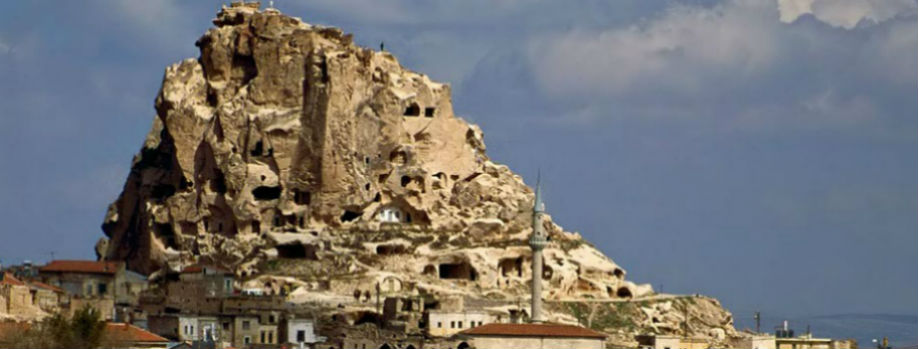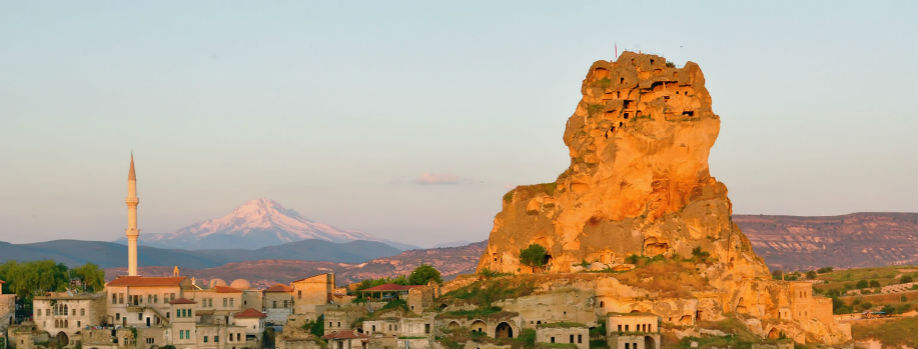Cappadocia, a dreamy slice of central Turkey dotted with ‘fairy chimneys’ (rock formations), has a history every bit as remarkable as its landscape. Volcanic eruptions created this surreal moonscape: the lava flows formed tuff rock, which wind and rain sculpted into sinuous valleys with curvy cliff faces and pointy fairy chimneys.
Cappadocians chiselled homes in the soft rock, paving the way for cave-dwelling hippies and today’s boutique fairy-chimney hotels.
Staying in Cappadocia today doesn’t involve any hardship or subterranean chambers. Many cave dwellings and fairy-chimney chapels have been converted into boutique hotels, where you can try the troglodyte lifestyle in luxury. Features include cave hamams (Turkish baths), rock-cut arches, walls patterned with volcanic colour-banding and panoramic terraces surveying the valleys. You’ll quickly discover what the locals have known for centuries: the tuff rock keeps rooms cool in summer and warm in winter.
Why so many cave dwellings in Cappadocia?
The troglodyte habit is often attributed to a need for places of refuge and concealment in troubled times, suggesting a chronology linked with either the Arab raids of the seventh or ninth centuries or the Turkish ones of the eleventh century.
The habit itself does not, however, imply such a need. In fact, rock-cut villages often occupy conspicuous sites…Instead, as noted above, this mode of architecture should be seen as a logical response to the local conditions. The millstone closures, which appear formidably defensive to an eye accustomed to built architecture must also be seen in this context: when timber is scarce and the soft rock easily worked, such a closing method for seldom-used storage cavities may be more efficient than conventional door.
The rock-cut villages cannot, therefore, be assigned with certainty to the periods of turmoil. There is certainly no question of concealment as far as the cave churches are concerned, since they are often located in prominent sites and many also have elaborate carved facades. Nor is there reason, therefore, for assigning the churches to periods of insecurity.
10 Fascinating Cave Dwellings in the World
Another town in Cappadocia, Uçhisar is situated at the highest point in the region just 7km from Nevşehir. The rock castle of Uçhisar can be seen for miles away. The cave dwellings inside this rock used to be the most populated area of Uçhisar. However, as the danger caused by erosion became greater, people moved away. The last residents left in the 1950s. The top of the castle provides a magnificint panorama of the surrounding area.
Ortahisar means “middle castle” and as its name implies, it is central among the Cappadocian towns of Goreme in central Turkey. Its most pronounced structure is the castle of Ortahisar situated at a 86 meter (282 ft) high cave. The castle has been used strategically and for accommodation. The caste has partly crumbled away revealing some of its interior. Today it has been restored and the peak is accessible by a staircase.
3- Kandovan Iran
4- Vardzia Georgia
5- Bandiagara Escarpment Mali
6- Mesa Verde USA
7- Sassi di Matera Italy
8- Bamiyan Afghanistan
9- Matmata Tunisia
10- Guyaju China
Cave Dwellings, Cappadocia,




The historical implications of the various folk that used these dwellings for protection. Imagine Christians in hiding.
After the initial curiosity, there are the same… the church caves are slightly more interesting…
Still worth a visit … but once is enough.
tour guide not necessary, there are arrows in there and fun to explore! not for those with claustrophobia
Cave Dwellings in Cappadocia perhaps one of the key highlights of Turkey.
It was a life time experience to understand a bit about the History and the culture of the people who and how they lived. People interested in History should visit once in a life time, if possible.
A steep walk in places but a marvellous place to visit and hard to imagine people living there. Plenty of churches to see but on the paintings , all the saints and biblical faces had been scratched out.
Seeing pictures of this 'other wordly' landscape will never prepare you for the oddest natural sculptures you are ever likely to see. At first glance when you look into the valley you feel like you've entered a smurfs movie or something but as you get closer soon realize these are not man made but formations made by centuries of erosion….
it is an out of this world experience …. to know that people actually lived in these till the mid 50s is rather mind boggling…
Interesting place of ancient homes and churches all built in caves. You can also see some very old frescos and paintings in the churches. These were places for the Hittites and early christians. Well worth a visit.
Its one of the best place to see in cappadocia. Undergroud cities, beautiful Valley and churches. Cappadocia means land of beautiful horses.